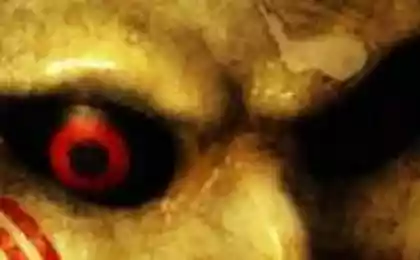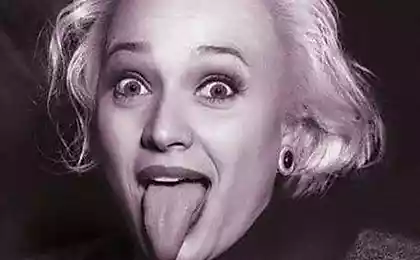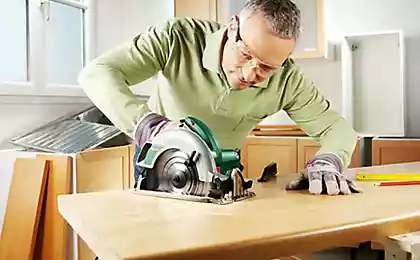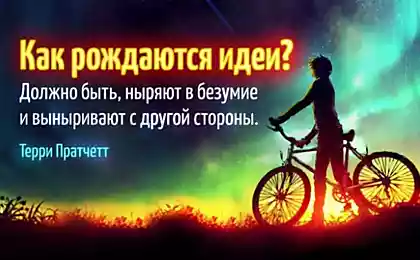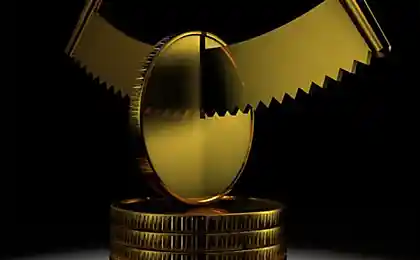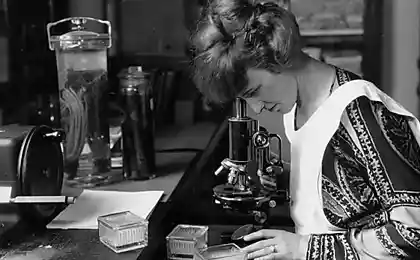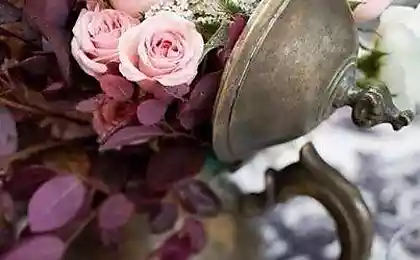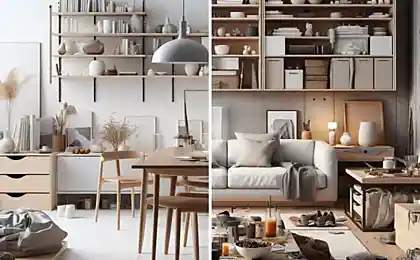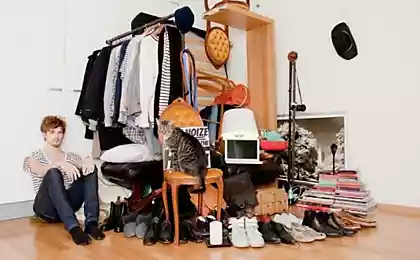817
Circular saw, Kevlar, wipers and 7 more things invented by women

If you make a list of the most famous inventions of the last few centuries, among the authors of these inventions will be very few women. And it's not that women do not know how to invent or do not have a creative bone, but they face many obstacles in getting "credit" for their ideas.
Take, for example, the case of Sybil Masters (Sybilla Masters), a woman who lived in the American colonies. Observe the work of Indian women, she came up with a new way to turn corn into cornmeal. Sybil went to England to obtain a patent for his idea, however, if the current law, women were forbidden to have their property, including intellectual. This property is usually owned by a woman or her father or her husband. In 1715, a patent for her invention yet been issued, but the document was the name of her husband.
Mary Kies (Mary Kies) was the first American woman who has registered a patent for his name. In 1809, it developed a method of weaving straw hats, it was an economic boon for New England. After receiving the document in his own name, Mary thus opened the way for other women to the inventors to patent their ideas. Both women were quick to take advantage.
1. Circular pila
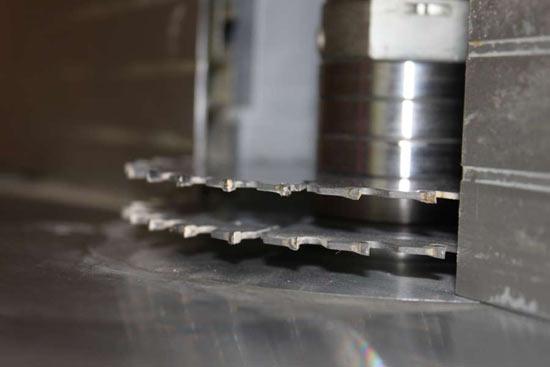
In the late 18th century there was a Protestant religious sect known as the Shakers. The main values of this sect were communal life, gender equality and hard work. Tabitha Babbitt (Tabitha Babbitt) lived in sheykerskom community in Massachusetts and worked as a weaver, but in 1810 she came up with a way to lighten the load on the work of his brothers. She noticed that men sawing logs a special saw with two handles, you need to pull it back and forth. Although the load on the two men was the same, sawn timber only when the saw is moving forward and in reverse motion with the log, nothing happened. Babbitt thought it was a waste of energy, and created a prototype of a circular saw, which later came to be used in the sawmill industry. She came up with a circular saw blade, so every move made sense. However, because of the commandments of the community, Babbitt did not receive a patent for his invention.
2. Chocolate pechene

There is no doubt that many of the culinary masterpieces are born by accident, but among them is to select one of the most enduring and delicious - chocolate chip cookies.
Ruth Wakefield (Ruth Wakefield) worked as a dietitian and food lecturer before she and her husband purchased the old house-post at the outpost in the suburbs of Boston. Traditionally, these houses were a place where weary travelers paid tolls, snack and fed the horses. Ruth and her husband have turned this place into a hotel with a restaurant. One day in 1930, Ruth baked for residents of the hotel pastry in which a prescription was necessary to add the melted chocolate, but the woman was in a hurry, so she took the usual chocolate Nestle, has broken into small pieces and add to the dough, assuming that during baking melted chocolate itself. Instead, the chocolate has acquired a special form, and thus there was the birth of chocolate chip cookies.
Nestle company noticed that sales of its chocolate grown in Massachusetts. Company representatives met with Wakefield to talk about her liver, which very quickly gained a good reputation among tourists. At the suggestion of Ruth, they have added to their line of chocolates for easier fault, and then in 1939 began to sell factory-made biscuits, while Ruth was a recipe printed on the reverse side of the package. In exchange, the woman received a life free software chocolate.
3. Korrektor

Bette Nesmith Graham (Bette Nesmith Graham) was not very good typist. However, the high dropout rate of college, that touched her, brought the girl to the secretariat Bank of Texas, where she became the executive secretary of the chairman of the board of the bank. This was the beginning of the 1950s, the electric typewriter had just been put into operation. But secretaries often had to retype entire pages of text because of one little mistake, as used at the time the carbon tape could not fix bugs.
Once Graham watched as workers loaded a festive pattern on the window of the bank. She noticed that they were wrong, they are just another layer of paint on top to "close" error. Seeing this, she decided that she will be able to apply this idea in his work. Using a blender, she mixed the paint, water-based dye that was used in her typewriter. The resulting mixture is she took on the job, and she was able to seamlessly with a thin watercolor brush to correct any errors in the printed document it. Soon other secretaries began to demand this product, which is produced by Graham in your own kitchen. Graham was sacked from his job for spending a lot of time on the distribution of the goods, which she called "No errors." However, being unemployed, she was able to improve its product, rename it to "liquid paper" and get a patent on it in 1958. Although typewriters have been replaced by computers, many people still use white liquid - corrector.
4. The compiler and programming language COBOL
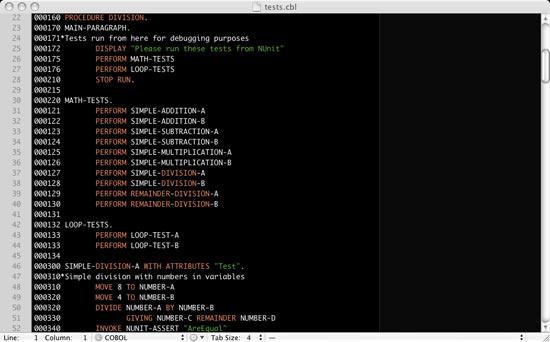
Speaking of computer technology, we tend to call such names as Charles Babbage (Charles Babbage), Alan Turing (Alan Turing) and Bill Gates. However, Admiral Grace Murray Hopper (Grace Murray Hopper) deserves credit for its role in the computer industry. Admiral Hopper began serving in 1943, while she was at Harvard University, where he worked on the creation of a computer IBM Harvard Mark I, which was the first large-scale computer in the United States. She was the third person in the project, while Grace wrote a manual operation, which enjoyed its followers. In 1950, Admiral invented the compiler that transformed the British team in the machine code. This meant that now programmers could write code more easily and with fewer errors.
The second compiler Hopper, Flow-Matic, used for programs UNIVAC I and II, which first came to support the sale of computers. Admiral Hopper also oversaw the development of a common business-oriented language COBOL, which was one of the first computer programming languages. Admiral Hopper received numerous awards for its work, in addition, in her honor was named the USS.
5. Color signal rakety

When March Coston (Martha Coston) was widowed in 1847, she was only 21 years old. In the hands of her four children, and she had not the slightest idea of how to live and what to feed them. One evening she was leafing through a notebook of her deceased husband, and found there a plan to create a flare system that could use the ships to communicate with each other at night. Coston asked the relevant authorities on how to check the system to work, however, did not succeed, but Coston was irresistible.
The next 10 years she spent what is involved in the improvement of the design and the device invented by her husband. She consulted with scientists and officers, but still could not figure out how to make sure that the flash was bright and durable, with were easy to use. One night she brought her children to the street so that they looked at the fireworks, then that her head and came to the idea to apply some pyrotechnic technology in its flare system.
Flare system finally worked, and the US Navy bought the rights to it. Colored flares Coston were widely used during the Civil War. But, unfortunately, the flare system was not the best way for women to feed their children. According to military documents, Koston made for the Navy during the Civil War around 1200000 missiles, which it provided to them at cost. She had to pay $ 120,000, of which it has received only 15,000, and, as she wrote in her autobiography, the navy refused to pay her the full amount due to the fact that she was a woman.
6. Paper paket

Margaret Knight (Margaret Knight) is not invented the paper bag, but those first paper bags are not as useful for carrying things. They were more like envelopes, so there was no possibility of their use for the products, that is, as we know them now, they have no right. For this we should thank the Knight. It is understood that such a package should be a large area of the bottom, then the weight is distributed evenly to, and could accommodate such a package would be more things.
In 1870 she created the wooden machines that cut and glued paper bags square base. While Knight has worked on the creation of a prototype unit of iron, only to patent his invention, she discovered that her idea of stealing a man named Charles Annan (Charles Annan), which saw its wooden invention a few months earlier. She filed a lawsuit against Annan, who argued that it is impossible that a woman was able to invent such a complex in the car. Knight picked up all his sketches, drawings and notes, in the end she was able to prove the opposite and get a patent on the device in 1871.
However, it was the first patent that got her so hard, but it is not the first patent in her life. At age 12, she developed industrial machine automatically stops the device if something went wrong, thus preventing a large number of injuries. Knight has received more than 20 patents.
7. Dish mashina
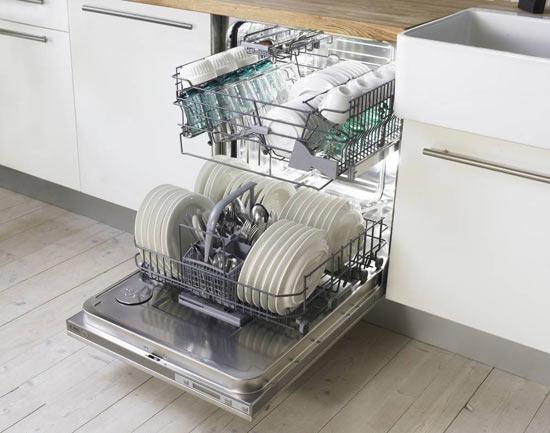
We can assume that the dishwasher invented a man who spent years standing over the sink and washing away the mountain of dishes, lamenting the wasted time, wasted. In fact, Josephine Cochrane (Josephine Cochrane), which has received a patent for the first working dishwasher, do not spend so much time washing dishes. The real impetus for its invention was the fact that one day, after a nice dinner, its employees during the cleaning in the kitchen broke an amazing Chinese porcelain set that was very dear to her.
Cochrane was a special secular, who loved a good time, however, after the death of her husband in 1883, she was left with a huge amount of debt. Rather than sell the numerous relics, she focused on creating machines that could wash them well, without harming them. Her car, based on the work that has been directed on the dishes under strong pressure jet of water, allowing it to obtain a patent for the device in 1886. The woman claimed that to invent the car was much easier than push it to the masses. At first, her invention failed among individual consumers, as many families did not have water heating systems, which are necessary for operation of the machine, and those who were not willing to pay for what women do for free.
Undaunted by this failure, and she began to look for the meetings with the directors of major hotels and restaurants, telling them that the dishwasher can do the work for which they paid tens of workers. Over time, however, more and more families began to get its device currently in private ownership.
8. Stekloochistiteli
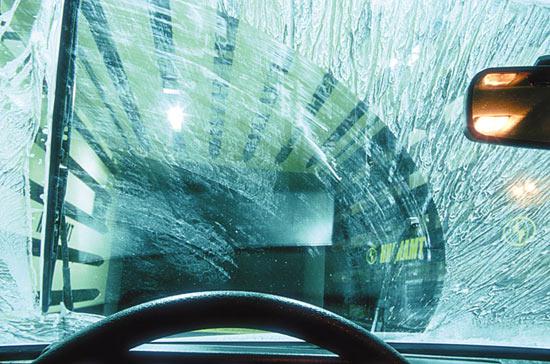
At the dawn of the 20th century, Mary Anderson (Mary Anderson) first visit to New York. She saw that New York, which is very different from what tourists see today. Then there was no more endless traffic jams and an incredible amount of cars that is infinite and meaningless signals to each other in the vain hope of faster drive. In those days, cars have not yet captured the American imagination and were quite rare. However, a woman from Alabama, then having gone to New York, has invented what has become the standard for each vehicle. During his visit, Anderson went on the tram through the snow-covered city.
She drew attention to the fact that the driver had to stop every few minutes to clear snow from the windshield. At that time, all the drivers have done so, so when there was a rain or snow, it was a real attack, which had to deal with. Back home, Anderson developed a special holder on the spindle, which has been using the handle attached to the outside of the windshield. When the driver was needed to clean the glass, he simply pulled the handle and the unit removes dirt from the windscreen. Anderson received a patent for his device in 1903, but only 10 years later, thousands of Americans began to travel by car with her invention.
9. Nistatin

Romance at a distance often questioned, however, Rachel Fuller Brown (Rachel Fuller Brown) and Elizabeth Lee Hazen (Elizabeth Lee Hazen) were able to prove that the professional relationship at a distance can lead to productive results. Both women worked in the New York State Department of Health in 1940, but Hazen was in New York, and Brown was in Albany. Despite the miles separating them, they actively collaborated in the creation of the first successful drug fighting with fungus.
In New York, Hazen felt soil samples in order to check whether the interfaces of any of the organisms with mushrooms. If she could find some activity in the soil, it had to send the sample to the colleague, whose task was to extract from the soil organism that has caused the reaction. Once Brown have found the active ingredient, it had to send the sample back to Hazen, so she checked it again for the presence of fungi. If the body is able to kill the fungus, it should be assessed for toxicity. Most of the samples were too toxic to humans, but, finally, Brown and Hazen ran into an efficient body that kills fungi and safe for humans. This happened in 1950.
They named their drug Nystatin. Currently, the drug is sold under various trade names, and he treats fungal infections that affect the skin, genitals and intestines.
10. Kevlar

It had to be just temporary work. Stephanie Kwolek (Stephanie Kwolek) began working at DuPont in 1946 in order to accumulate enough money to study in medical school. In 1964, she was still in the same place of work, exploring how to make the polymers very strong synthetic fibers. Kwolek worked with polymers whose molecules are rod-shaped and lined up in one line.
Compared with the molecules that form the mixed system Kwolek believed that clear lines, in which the molecules are arranged, it will enjoy the material stronger. Moreover, it's true despite the fact that these polymers are very difficult to dissolve in the liquid, which can then be tested. Later, she was finally able to create a solution with a rod-shaped molecules, but its solution was obtained was significantly different from all other previously received Stephanie.
The next step it was supposed to be passing the fluid through a special machine that produces fabric. However, the operator of the die machines are not allowed to use the device Kwolek, since it obtained a mixture of radically different from that applied previously to him, and he feared that the machine can break down.
Yet Kwolek insisted and after the process had Kwolek dense as steel fiber. This material was given the name Kevlar, and is currently used for the production of skis, radial tires, brake pads, cables for suspension bridges, helmets, etc.. In particular, Kevlar used to make bulletproof vests, so even though that Kwolek and did not go to study in medical school, it, nevertheless, managed to save many lives.
Source: ibigdan.livejournal.com
via factroom.ru
